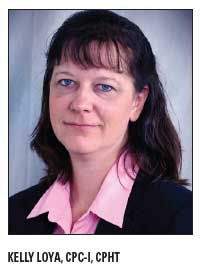Infusion confusion: Quick fixes for keeping reimbursement on track
In January 2005, Medicare changed the coding and billing of injection and infusion services in order to describe more precisely the complexity of the services and provide adequate reimbursement for the nursing time involved.
In January 2005, Medicare changed the coding and billing of injection and infusion services in order to describe more precisely the complexity of the services and provide adequate reimbursement for the nursing time involved.
Today’s economically challenged oncology practices must fully understand this coding and billing system. Our goal is to elucidate the common sources of confusion in injection and infusion services.
Accurate coding

Improving supporting documentation is critical for accurate coding and requires improved communication between clinicians and their coding and billing staff. Yet, errors in reporting injection and infusion services, leading to revenue loss and possible noncompliance, are still common, even three years after implementation of the new rules.
A useful tool is a coding worksheet (see box on page 38) that outlines the most common services provided in a free-standing infusion office or center and couples them with the appropriate oncology codes grouped and organized for accurate selection.
This worksheet will enhance understanding of this complex system and lead to the effective capture of revenue. Footnotes on the worksheet outline appropriate code use, quantity limits per encounter, and specific restrictions for using the add-on codes. However, for a full understanding of the coding guidelines, we recommend reviewing the section notes in the Current Procedural Terminology (CPT) manual and Publication 100-04, Chapter 12, in the Medicare Claims Processing Manual.
Accurate reporting
A significant portion of the revenue stream is realized in the services delivered and not the products provided. To keep drug expenses down, oncology practices need to be efficient shoppers with optimal drug inventory control processes to avoid unmanageable overhead costs. All practices should take advantage of the appropriate incentives and rebates provided by drug manufacturers as well as group purchasing organizations (GPO).To ensure compliance, only those medications that represent an operating expense for the practice should be reported.
A common source of errors is outdated or inaccurate encounter forms or chargecapture documents. Typically, medication services are chosen by clinical personnel who translate and relay units of service to the billing department. If drug strengths, units of billing, and code choices are accurately reported, such errors can be avoided or minimized. An annual review of charge-capture documents is essential.
Reporting units for medications given and wasted has always been critical to reimbursement and compliance.
If clinical staff report services on a form, they should be instructed to write the exact medication dosage given, including wasted amounts from singledose vials.
References:
Click here (PDF) for a copy of the worksheet
Oncology Peer Review On-The-Go: Cancer Care Management During the COVID-19 Pandemic
October 28th 2020The newest episode of Oncology Peer Review On-The-Go speaks with 2 authors of an article from the October Issue of the journal ONCOLOGY focusing on effective cancer care management during the coronavirus pandemic.